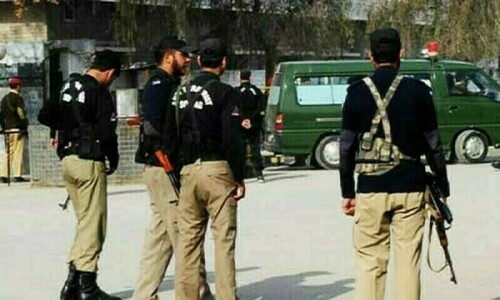They have not yet rebuilt the schools destroyed 10 years ago. Yet, another devastating earthquake spreads destruction across towns and cities in northern Pakistan killing hundreds and displacing thousands.
A devastating 7.5 magnitude earthquake, just a tad bit shy of the 7.6 magnitude earthquake that devastated Pakistan’s Northern Areas in October 2005, hit parts of Pakistan and Afghanistan on October 26, 2015, with the latest death toll in Pakistan alone already surpassing 255.
The earthquake disrupted communication with the remote towns and communities, which is preventing the authorities from knowing the true extent of the devastation.
Also read: 60-seconds of horror — 'We thought the earth would split open'
It was only a few weeks ago that various agencies and departments commemorated the 10th anniversary of Pakistan’s deadliest earthquake, which killed over 85,000 and displaced 3.5 million in 2005.
Some, including Cuban doctors, were justifiably in a triumphant mode. Despite the odds, they had prevailed in providing sustenance and support to those affected by the earthquake.
Many wonder if the latest earthquake will help drive home the lessons that have not been learnt in the past.
Reports suggest that a large number of households had rebuilt their homes disregarding the earthquake resistant designs put forth by the government. It is not prudent to live in the seismically active zone and ignore the building codes necessary for safe living.
Also read: Quake survivors endure crippling cold in the open
In Islamabad, the Cuban ambassador, Jesus Zenen Buergo, participated in an event commemorating the 10th anniversary of the 2005 earthquake.
Pakistan owes a big debt of gratitude to Cuba, which sent 2400 doctors and medical staff after the earthquake who established 32 field hospitals and ran those for months after the earthquake.
I wonder if Pakistan learnt anything from the Cubans in emergency medicine. The Cubans gave Pakistanis thousands of scholarships.
How many of those who went to study in Cuba specialised in ambulatory response and trauma?
The 2005 earthquake was indiscriminate in its destruction. It destroyed public and private property alike. Some suggest that given the shoddy construction of public properties, like schools, property and human losses were more pronounced in public properties.
No wonder almost 6,000 schools were damaged in the earthquake. 18,000 children and 853 government schoolteachers lost their lives in the earthquake. They were buried in the school buildings.
Newspaper reports revealed that of the 5,742 schools partially or fully destroyed in 2005, 2,243 still await reconstruction. Ten years later, the buildings destroyed in the earlier earthquake had not been repaired. The recent earthquake has possibly adding many more to the count.
In China, a recent earthquake resulted in the deaths of several hundred children who died after their school buildings collapsed. Public outrage forced the Chinese government to pursue those responsible for shoddy construction of schools.
In Pakistan, almost everyone responsible for the deaths of not a few hundred but 18,000 school children has avoided prosecution.
The human toll of the last earthquake with estimates of those who perished ranging between 75,000 and 100,000, made the 2005 earthquake one of the world’s most devastating disasters. About 11,000 children were orphaned. Many went missing.
The International Committee of the Red Cross reported 573 missing after the earthquake. Eventually, 350 were located. Still a couple of hundred remained unaccounted for.
Nazish Naz, a 16-years old girl in 2005, is one of the missing persons. Her remains were not found and her parents have not let go of the hope that one day she would walk back into their lives. A similar hope lingers on in the hearts of the families of another two hundred-plus families waiting for news on their missing loved ones lost in 2005.
Also read: 2005 earthquake — Ten years of searching for Pakistan's missing
Regardless of the scale of the tragedy, the lifecycle of such news is short. The earthquake and its victims will be in the news locally and internationally for a few days until a new news cycle begins with a new disaster.
The challenge will for the first responders to carry enough and relevant relief goods and services to the disaster-stricken areas. Their supplies though will run out fast as the interest and attention shifts along with the resources.
Also read: Eyewitness accounts — 'Pure terror. A minute of quake'
By early accounts it seems that the recent earthquake, though similar in magnitude, has fortunately not been as destructive as the one in 2005. Still, it will take weeks, if not months, to ascertain the true scale of the destruction.
During this time, the international media will most certainly lose interest in the story. Thus, it becomes the task of the local media to sustain the interest in the story over time because those made homeless yesterday will take months, if not years, to be housed again.













































